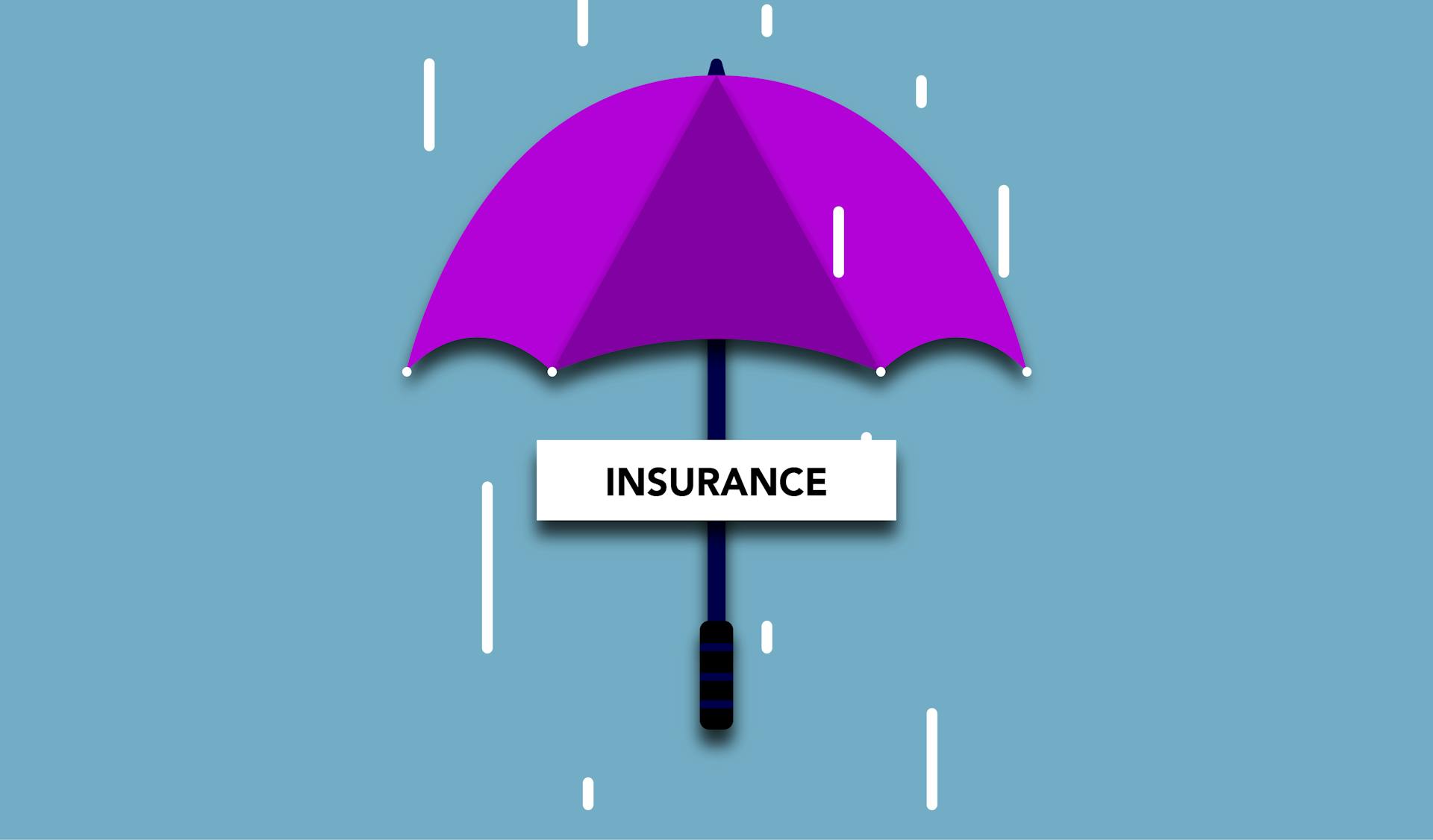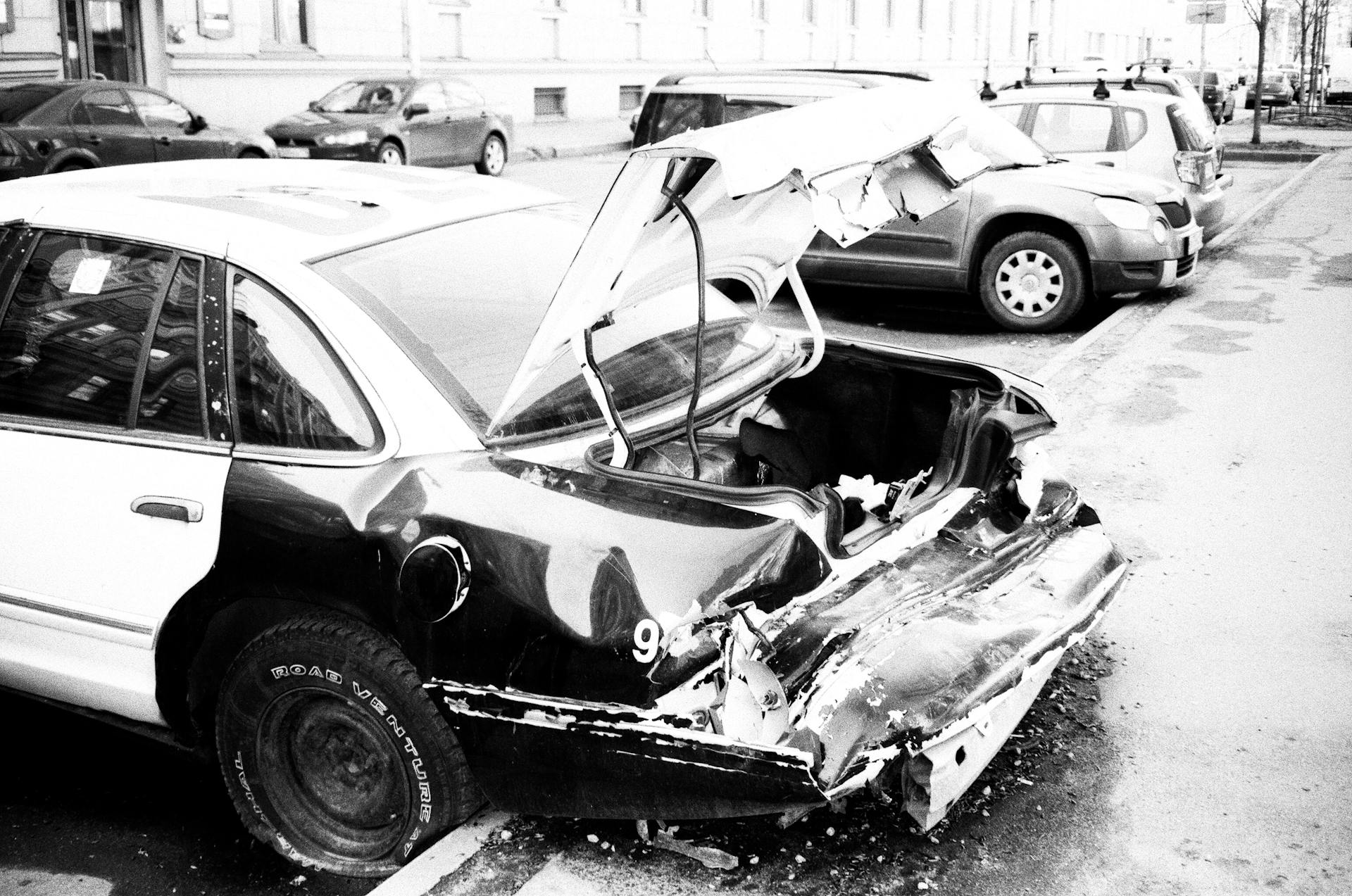
Liability coverage limits are a crucial aspect of any insurance policy. This determines the maximum amount your insurance company will pay for damages or injuries caused by you or your business.
Most states require liability coverage limits to be at least $25,000 per person and $50,000 per accident. This is often referred to as the "25/50" limit.
Businesses with employees typically need higher liability coverage limits, often ranging from $500,000 to $1 million or more. This is because they may be held liable for employee actions that result in damages or injuries.
The specific liability coverage limits required for your business will depend on various factors, including the type of business you operate and the level of risk involved.
Check this out: What Are Business Liabilities
Types of Liability Coverage
Liability coverage is a crucial aspect of car insurance, and understanding its types is essential. Bodily injuries are covered under liability insurance, including injuries or deaths caused to another party in a car accident.
See what others are reading: Does Car Insurance Cover Key Fob Replacement
There are two main types of liability coverage: bodily injury and property damage. Bodily injury coverage will reimburse the other party for medical expenses and other related costs.
Bodily injury coverage can be broken down into two categories: per person and per accident. This means that the insurance company will pay out a certain amount per person injured, up to a maximum amount per accident.
Here are the two types of liability coverage in a nutshell:
- Bodily Injury: Covers injuries or deaths caused to another party in a car accident.
- Property Damage: Reimburses the other party for car repairs and other property damages caused in at-fault accidents.
Liability Coverage Limits
Liability coverage limits are the maximum amount an insurance company will pay out for damages or injuries in an accident. You want to make sure you have enough liability coverage to cover your net worth, which includes the value of your cash, investments, and assets minus your debt.
If you're found at-fault in an accident, you could be held personally responsible for any damages or injuries that exceed your liability limits. This means you could end up losing your home or having your wages withheld.
Curious to learn more? Check out: 457b Limits
In most states, the minimum liability coverage requirements are set by law, but these limits may not be enough to cover the full cost of an accident. For example, if you're at-fault in an accident that totals a $50,000 sports car, you'll be on the hook for the additional $40,000 if your property damage liability limit is only $10,000.
To determine how much liability coverage you need, consider the costs associated with car accidents, such as medical care for injuries and car repairs. Experts recommend going beyond the minimum bodily injury coverage limits required by most states, with limits of $100,000 for one person in an accident and $300,000 for all people injured in a single accident.
Here are the recommended liability coverage limits:
Ultimately, the amount of liability coverage you need will depend on your individual circumstances and the level of risk you're willing to take. It's a good idea to talk to an agent who can run the numbers and suggest the best options for you.
Liability Coverage Requirements
Liability coverage requirements vary by state, and each state sets a minimum for how much liability coverage a motorist must carry.
Some states require drivers to have a minimum of $25,000 for injuries to one person, $50,000 for injuries to multiple people, $50,000 for death of one person, and $10,000 for property damage.
For example, California requires a minimum of $30,000 for injuries to one person, $60,000 for injuries to multiple people, $15,000 for property damage, and $105,000 in total liability coverage, effective 2025.
New Hampshire is one of the few states that does not require drivers to have liability insurance, but it's still a good idea to consider purchasing it.
Here's a breakdown of the minimum liability limits for each state, including the bodily injury per person, bodily injury per accident, and property damage minimum limits:
| North Dakota | $25,000 | $50,000
Liability Coverage Costs
Liability coverage costs can vary significantly depending on the state you live in. The average annual cost of liability coverage in the US is $547, but this number can range from as low as $276 in Wyoming to as high as $2,275 in Louisiana.
If you're looking to minimize your costs, you might want to consider moving to a state like Vermont, where liability coverage costs an average of $324 per year. On the other hand, if you live in a state with high costs, like Florida or Louisiana, you may need to budget more for liability coverage.
Here's a breakdown of the average annual cost of liability coverage in each state:
<
Liability Coverage and Homeowners
Liability coverage for homeowners is a crucial aspect of protecting your assets. Bodily injuries caused by you or members of your household can lead to costly lawsuits.
Bodily injury coverage, for instance, will cover injuries or deaths you caused to another party in a car accident. This can include medical expenses, lost wages, and even funeral costs.
Property damage coverage, on the other hand, will reimburse the other party for car repairs and other property damages you caused in at-fault accidents. This can be a significant expense if you're found liable for damages.
Here's a breakdown of the types of liability coverage for homeowners:
- Bodily injury coverage: Covers injuries or deaths caused to another party in a car accident.
- Property damage coverage: Reimburses the other party for car repairs and other property damages caused in at-fault accidents.
Liability Coverage and Automobiles
Liability coverage is required by law in most states, but the minimum amount of coverage required can vary from state to state.
Bodily injuries are covered under liability insurance, which pays for injuries or deaths caused to another party in a car accident. Property damage is also covered, reimbursing the other party for car repairs and other property damages caused in at-fault accidents.
If you're involved in an accident that's not your fault, your insurance will typically cover the damage to the other party's vehicle. This is a key benefit of liability insurance, as it can help protect your assets from being seized to pay for damages.
You should ask your insurance agent or broker about the minimum amount of liability coverage required by law in your state, as well as the limits of your coverage. This will help you understand what's covered and what's not.
Here are some key questions to ask when buying auto liability insurance:
- What is the minimum amount of liability coverage required by law?
- Who pays for the damage if the accident isn’t my fault?
- What are the limits?
- What’s covered?
- Who does it apply to?
- Is there a step-down clause?
- When does my coverage start and end?
- Is it a good idea to bundle my liability coverage with my homeowners insurance to save money?
- What other coverage options should I consider?
- Will all of my medical expenses be covered?
Frequently Asked Questions
What does $100 k /$ 300k /$ 100k mean?
This policy covers up to $100,000 per person and $300,000 total per accident for bodily injuries. Understanding the limits of your insurance coverage is essential for protecting yourself and your loved ones.
Sources
- https://www.investopedia.com/terms/a/automobile-liability-insurance.asp
- https://www.nerdwallet.com/article/insurance/auto/liability-car-insurance
- https://www.autoinsurance.com/coverage/liability-limits/
- https://www.kin.com/blog/limit-of-liability/
- https://mwg.aaa.com/insurance/car/articles/how-much-liability-car-insurance
Featured Images: pexels.com


